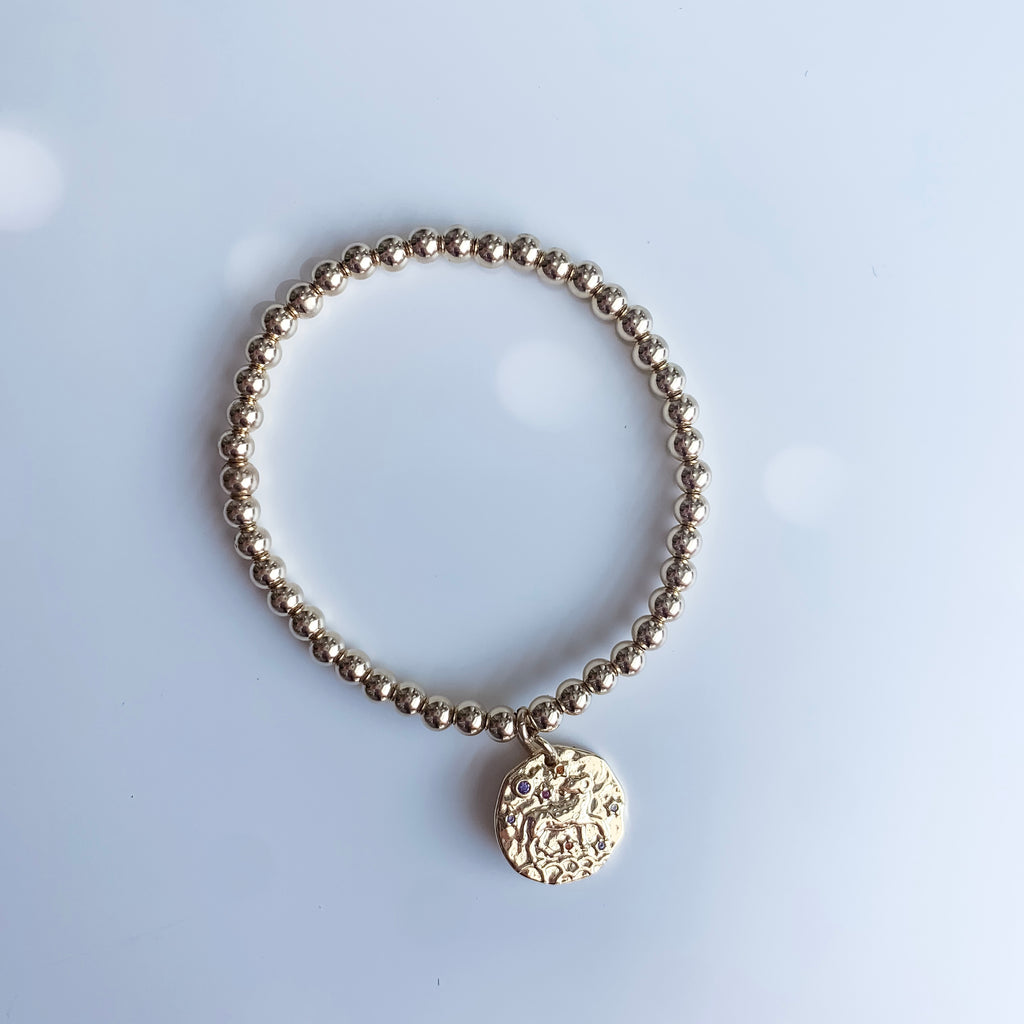Everything you need to know about tarnishing

It is important to know what your jewelry is made up of and what you can do to properly take care of your pieces and maximize the longevity. At the time of purchasing, it is often one of your first questions, if it isn't it certainly should be! Can I shower with this on? Can I swim with my jewelry? Will this tarnish over time? These are the questions I receive most often hence the reason I felt inspired to write this blog post:)
Have you ever wondered if real Gold can tarnish? I have and so I did some detective work and here's everything I discovered...
Gold is one of the least reactive chemical elements. Gold alone or pure gold does not combine easily with oxygen so it stays shiny, it does not rust nor tarnish, again, that is pure gold. In jewelry, it is rare to find a piece that contains only the pure gold element. Pure gold or 24 karat gold is too soft to be used in jewelry so it is usually alloyed with other base metals altering its properties. It is these other base metals alloyed with gold that actually reacts with or to oxygen, sulfur and moisture that eventually tarnish your gold jewelry.
The higher the karat of a gold jewelry is, the less likely it is to tarnish, where as 24 karat gold cannot tarnish. In general, tarnishing is mostly seen in jewelry that has lower gold karat and is usually seen in items that have less than 14 karats of gold. Little tarnishing may be observed in 14 karat gold jewelries and very seldom in 18 karat gold.
When your gold jewelry tarnishes, it doesn’t mean that it’s not real gold; it is not just pure gold or 24 karat gold. Real gold jewelry can eventually tarnish. There are even rare circumstances in which jewelry containing high karats of gold have tarnished but by and large the higher the percentage of gold in the alloy, the less likely that the gold piece will tarnish. When lower karat gold jewelry tarnishes, it does so in a much slower phase than sterling silver. Here are some of the common reasons that will trigger or hasten gold tarnishing:
Common causes of tarnishing
Oxygen and sulfur compounds mixing with moisture (like sweat for instance) are the most common cause of tarnishing. Our body chemistry also differs that is why some people’s jewelry may be more inclined to tarnish or tarnish more quickly than others. Other influences that may also contribute to tarnishing of even higher gold karat like 14 karat or 18 karat jewelry is the consistent exposure to high amounts of chemicals such as perfume, hairspray, deodorants and cleaning stuff like chlorine and detergents.
Another surprising cause of tarnishing is food items with high levels of acidity or sulfur compounds. Some items that can aid in tarnishing are onions, fruit juices, spices and pickled items.
Preventive Steps
- If you want to keep your gold jewelry looking its best for a long time, avoid the items mentioned above. Always remove your jewelry before taking a shower, a swim in a pool or the ocean, applying perfumes or working out. Chlorine especially at elevated temperatures can permanently damage or discolor your jewelry.
- Make sure to remove your jewelry also even when just washing your hands. Soap can leave your gold jewelry with a dull finish little by little and eventually, it becomes harder to clean when soap suds have already built up.
- Store your gold jewelry properly and separately or in compartments to avoid them from scratching each other. You may add a packet of silica gel inside the usual jewelry box so it absorbs any moisture in the box.
In terms of tarnishing, one’s lifestyle and the environmental conditions in your area can really affect your jewelry.
Treating tarnished gold jewelry
To remove surface tarnish of your gold jewelry, you can add a few drops of mild, non-phosphate dishwashing liquid to warm water and wipe the tarnished part with the mixture using your fingers or a cotton swab. Do not use toothpaste or baking soda as they are too abrasive. Dry your jewelry with a soft cotton cloth or allow it to lie flat and air dry completely even if it takes overnight and then once dry, you may polish it with a soft cotton cloth or a jewelry polishing cloth for shine.
If your gold jewelry eventually looks dull after a long time of use, you can bring it to a trusted jeweler so your piece can be thoroughly cleaned by an expert. You don’t want grabbing just any jewelry cleaner and end up damaging your precious piece instead of cleaning it. Your jeweler is the best person to give you advice on what to use for cleaning your piece.
